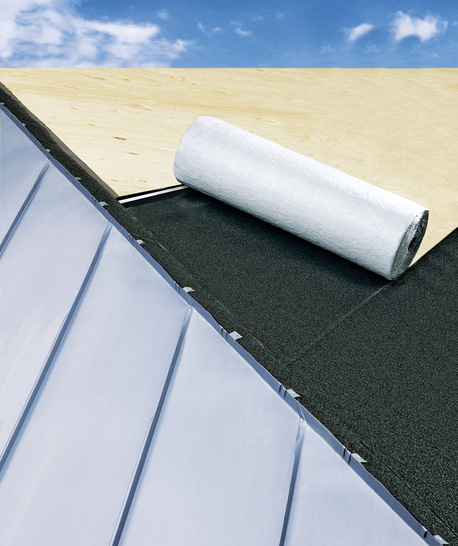They say: A metal roof is the best thing that can happen to a house. However, modern roof constructions can only be realised with progressive materials. In addition to a wealth of metals with equally diverse surfaces, chamber-dried structural timber, high-performance insulation materials and versatile separating layers are now standard. But complex roof superstructures only meet building physics requirements with flying colours if the components used are carefully selected and coordinated with each other. Not only metal roofing systems and corresponding fasteners are affected, but also suitable separating layers.
There has been a lot of controversial discussion in the past, especially about structured underlays. It is undisputed that such structured separation layers fulfill many different tasks and are even mandatory for special applications in Germany. Due to the recent discussion about undesired noise development on standing seam roofing, BAUMETALL takes up the interesting topic of "separation layers“ and informs about their properties as well as the practical installation.
More than just a protection against white rust formation
In sheet metal roofing structured separation layers have been in use since 1994. In the meantime, the initially quite critically regarded structured underlays with mesh have become a permanent feature in the construction of standing seam roofing. Structured underlays have a levelling layer within the mesh in which any secondary condensation or moisture diffusing from the roof structure can safely drain off to the eaves in tiny rivulets. In this way, the separating layer structure prevents direct moisture contact with the underside of the metal roof section - a feature that is particularly desirable when using materials susceptible to corrosion.
The tasks of modern seperation layers
Structured layers offer clients improved comfort and generate higher added value for specialist companies and thus an expansion of the order volume. In addition, technically correctly installed separating layers with mesh perform additional and equally important tasks:
Modern separation layers
Modern separation layers must be versatile and also function safely for several decades. High-quality brand products meet these requirements very reliably. But what will the separation layers of tomorrow look like? Increasingly thicker and fully insulated rafter fields as well as expected changes in the German Energy Saving Ordinance (EnEV) require high-performance separation layers for intelligent and future-oriented roof structures. The tightening of the Energy Saving Ordinance even suggests that non-ventilated roof superstructures will soon be standardized. In addition, the associated building physics requirements are prompting all those responsible to rethink old standards. Irrespective of this, modern architecture demands flat and distortion-free metallic roof and facade surfaces.
To meet all these requirements, the installation of separation layers specially matched to the substructure and facing material is essential. More and more company owners are even moving towards using structured underlays for all construction tasks, regardless of the choice of material. In order to use structured underlays in the best possible way and in compliance with the construction task, a wide variety of parameters have to be taken into account.
Background knowledge
For many decades, structured meshes have been successfully used in the geotextile industry. Possible areas of application are the creation of drainage levels in the landfill sector, in civil engineering or in basement waterproofing. It is particularly interesting that there are no special standards and technical requirements for the installation of structured meshes on roofs, and therefore the much stricter guidelines and standards for geotextiles apply. For example, the requirement for compressive loading in the landfill sector is much higher than in the roof sector. Surface loads occurring in civil engineering are significantly higher than loads caused by snow.
(first published in BAUMETALL issue 07-2014)
Contact us

